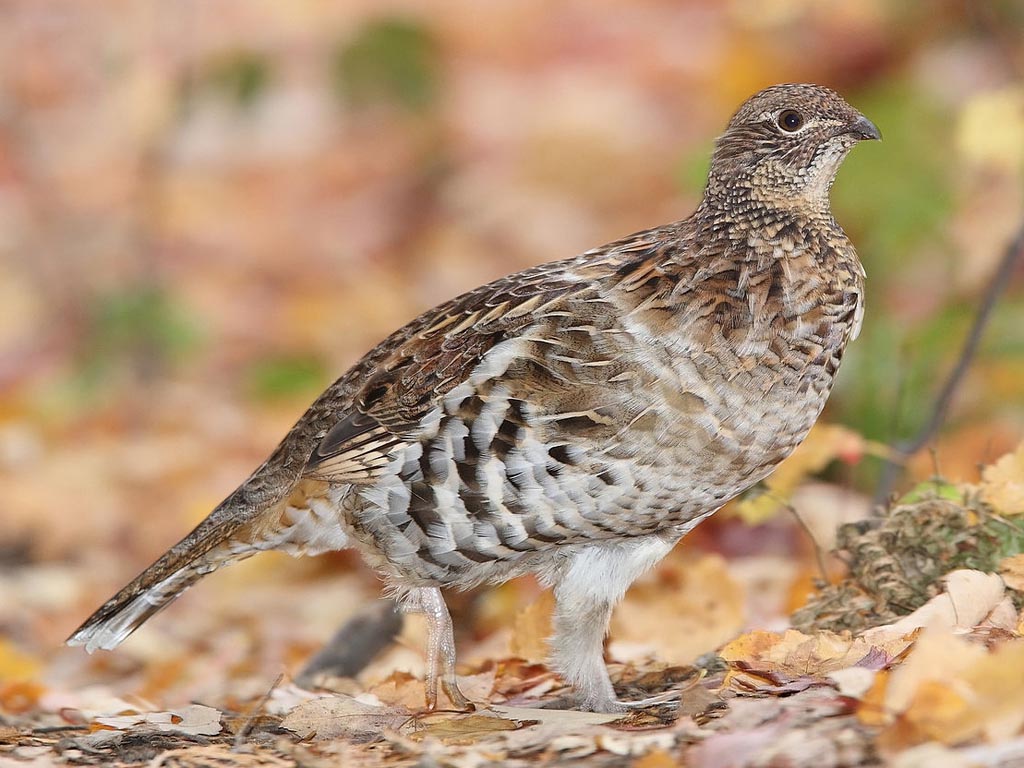
Bonasa umbellus
SUBFAMILY
Tetraoninae
TAXONOMY
Tetrao umbellatus Linnaeus, 1766, Pennsylvania, United States.
Fourteen subspecies.
OTHER COMMON NAMES
French: Gйlinotte huppйe; German: Kragenhuhn; Spanish:
Grйvol Engolado.
PHYSICAL CHARACTERISTICS
17–19 in (43–48 cm); male 1.3–1.4 lb (600–650 g); female
1.1–1.3 lb (500–590 g). Cryptic plumage; gray and brown color
morphs with gray commoner in northern parts of range and
brown commoner in southern parts. Small crest on head, erectile
black ruff on sides of neck, and fan-shaped tail with distinctive
subterminal dark band.
DISTRIBUTION
North America from Alaska to Labrador and Nova Scotia,
south to California and Utah in west and through Appalachians
to northern Georgia in east; Nevada and Newfoundland.
Resident
Bonasa sewerzowi
HABITAT
Mainly in old conifer forest with moderate understory usually
of bilberry, interspersed with bogs; up to 6,600 ft (2,000 m) in
Pyrenees.
BEHAVIOR
Male usually alone, while females and young form wintering
groups of up to 10; males gather loosely in lek areas to defend
territories and attract females using calls, erect strutting, and
tail-fanning displays.
FEEDING ECOLOGY AND DIET
Pine needles, holly leaves, birch buds, berries; leaves of heath
plants; young chicks especially take invertebrates.
REPRODUCTIVE BIOLOGY
Promiscuous. Laying in April–June; nest in thick cover in forest;
clutch size six to nine; incubation 26 days; chicks able to
fly after three weeks; males defer mating until third year.
CONSERVATION STATUS
Small and fragmented populations are threatened and prone to
extinction; continued hunting a particular threat in central and
south Europe, where increased predator numbers, alpine
tourism, and collisions with power lines and deer fences all
cause problems.
SIGNIFICANCE TO HUMANS
Attracts trophy hunters; hunted for food mainly in fall.
Other popular Animals
Photo Gallery of - Ruffed grouse
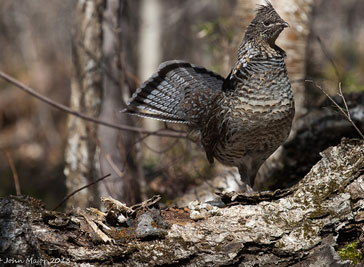
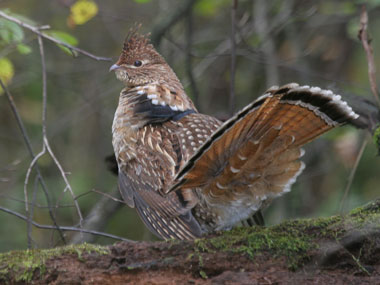
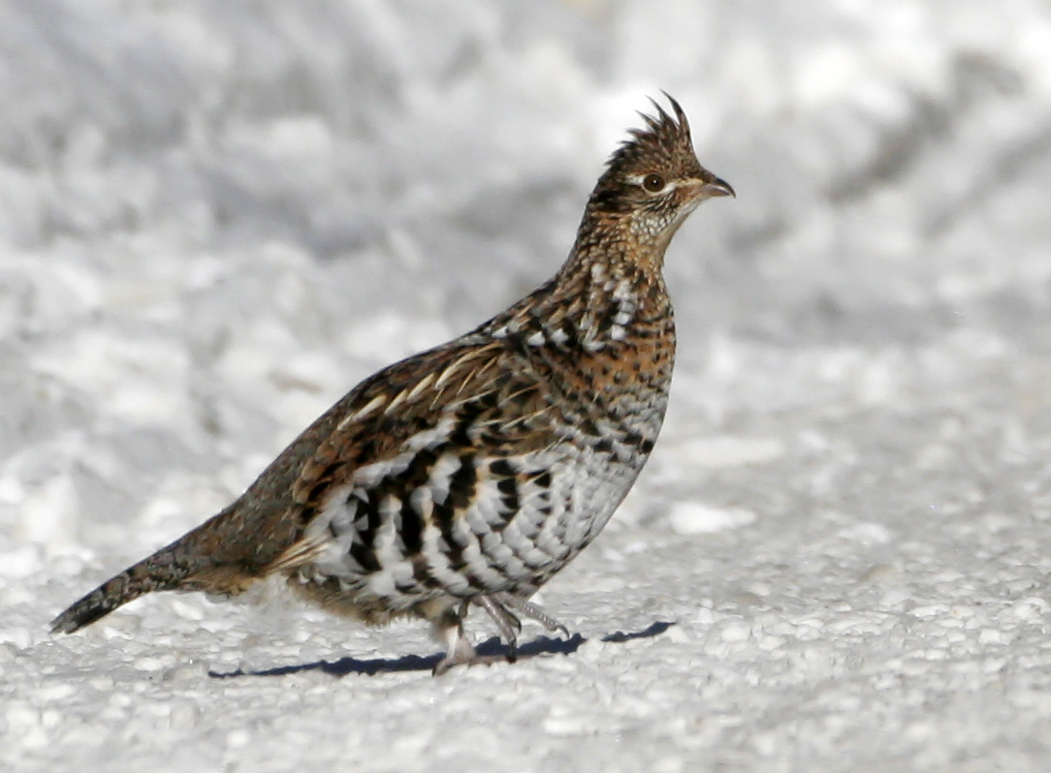
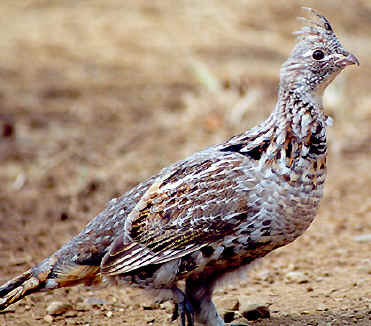
 Animalia Life
Animalia Life